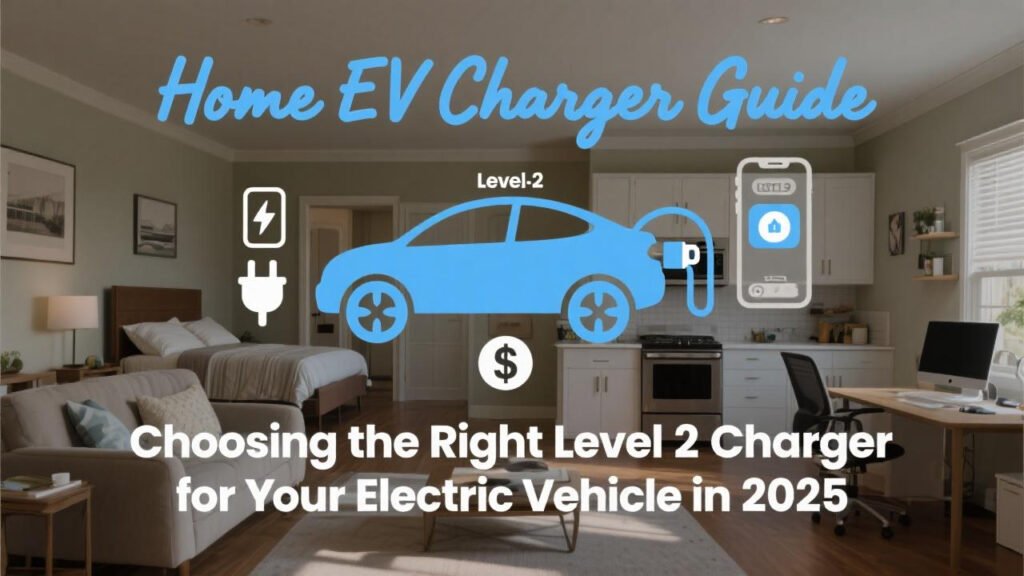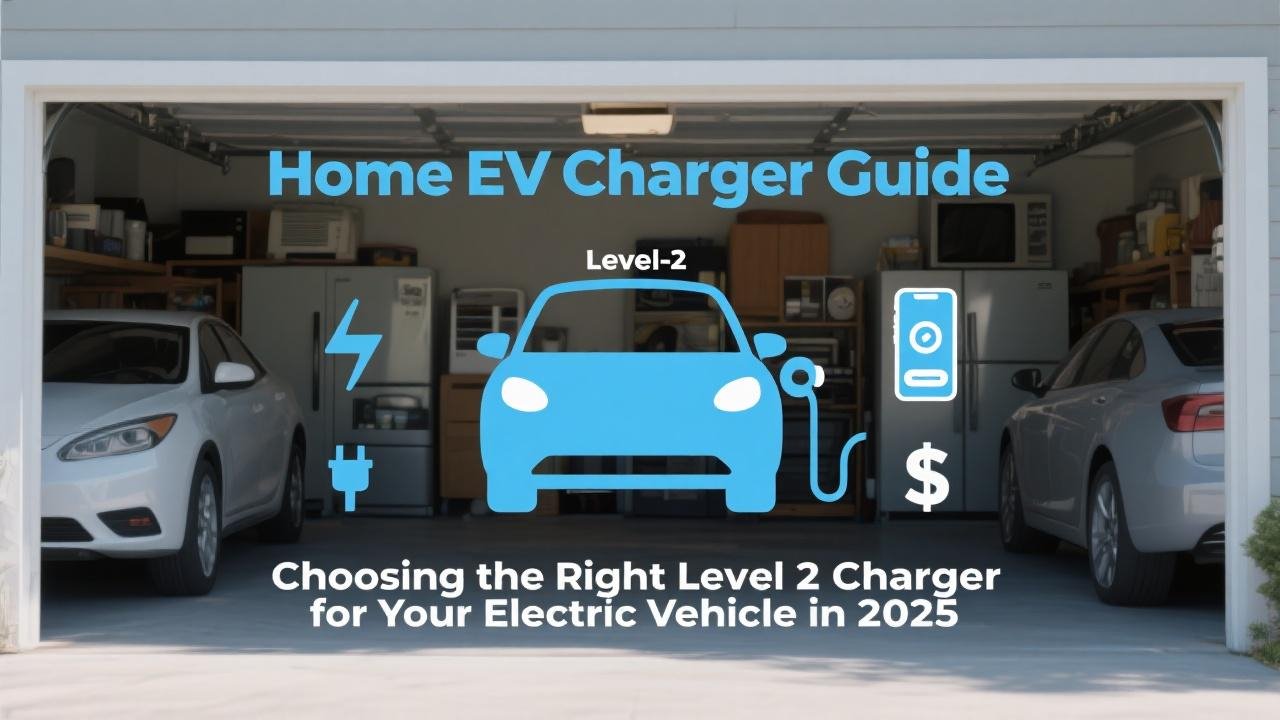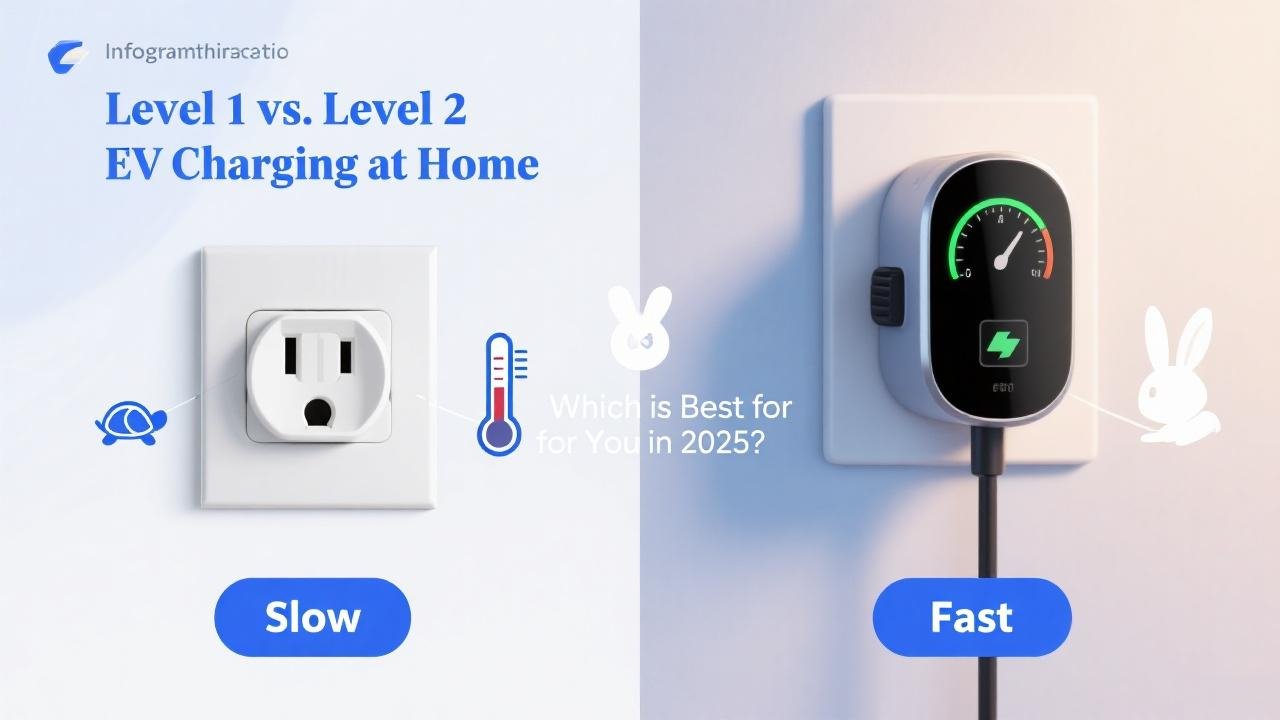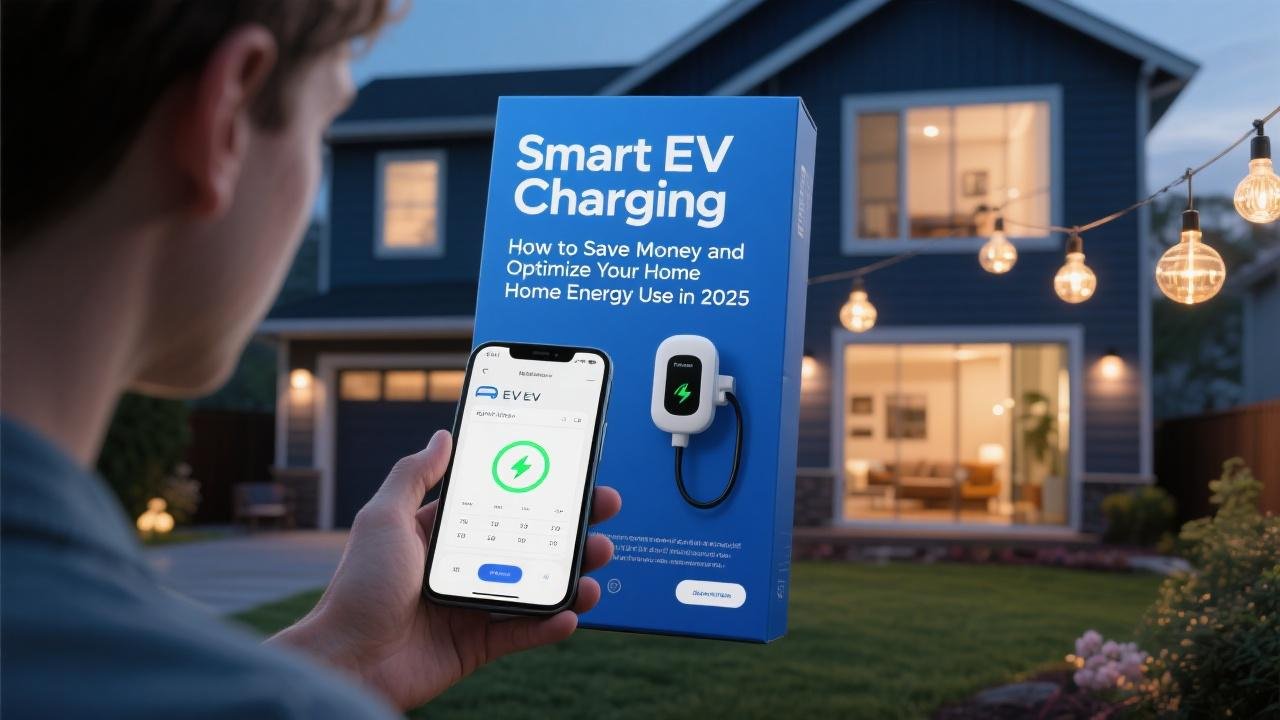Powering Your EV Journey from Home
Congratulations on joining the electric vehicle revolution or considering making the switch! Owning an EV is an exciting step towards a cleaner, more sustainable mode of transportation. One of the biggest conveniences of EV ownership is the ability to charge your vehicle at home, waking up each morning to a “full tank.” While you can use a standard wall outlet (Level 1 charging), most EV owners opt for a Level 2 charger for significantly faster and more efficient home charging in 2025.
This guide will walk you through everything you need to know about choosing the right Level 2 EV charger for your home, from understanding charging levels to selecting features and connector types. Platforms like EnergySage also offer resources and may connect you with installers for comprehensive home energy solutions, including EV charging.
Understanding EV Charging Levels: Level 1 vs. Level 2
- Level 1 Charger:
- Voltage: Uses a standard 120-volt AC household outlet.
- Charging Speed: Slow, adding about 2-5 miles of range per hour of charging. This means a full charge can take 20+ hours for many EVs.
- Equipment Cost: Often comes with the vehicle or costs $0-$200.
- Best For: Occasional top-ups or for plug-in hybrid electric vehicles (PHEVs) with smaller batteries. Not ideal as a primary charging solution for most battery electric vehicles (BEVs). Extended charging periods on Level 1 can sometimes lead to higher electricity costs over time compared to faster, more strategically timed Level 2 charging.
- Level 2 Charger:
- Voltage: Uses a 240-volt AC circuit, similar to what electric dryers or ovens use.
- Charging Speed: Significantly faster, adding about 10-60 miles of range per hour, with a common rate around 25 miles per hour of charge. A full charge typically takes 4-10 hours, making overnight charging very convenient.
- Equipment Cost: $300 – $1,000+ for the charger itself.
- Installation: Requires professional installation by a licensed electrician, as it needs a dedicated 240V circuit.
- Best For: Primary home charging solution for most EV owners due to its speed and convenience.
(Level 3 or DC Fast Charging is much faster but uses very high voltage DC power, requires expensive equipment, and is typically found in public charging stations along travel corridors, not for home installation.)
Key Factors to Consider When Choosing a Level 2 EV Charger in 2025:

Charging Speed (Amperage/Kilowatts):
- Level 2 chargers come in various amperage ratings (e.g., 16A, 30A, 32A, 40A, 48A, 50A). Higher amperage means faster charging (more kilowatts – kW – delivered to your car).
- Your Car’s Acceptance Rate: Your EV has a maximum charging speed it can accept from an AC charger. A charger with a higher amperage than your car can handle won’t charge it any faster. Check your EV’s specifications.
- Your Home’s Electrical Capacity: Your home’s electrical panel must be able to support the dedicated circuit required for the charger’s amperage. A 40A charger typically needs a 50A circuit, and a 48A charger needs a 60A circuit. An electrician will assess this.
- Future-Proofing: Consider a charger with a slightly higher amperage than your current EV might need if you plan to upgrade to an EV with faster AC charging capabilities in the future. The ChargePoint Home Flex, for example, offers adjustable amperage from 16A to 50A.
Connector Type: J1772 vs. NACS (Tesla):
- SAE J1772: This is the universal charging connector for Level 2 AC charging used by most non-Tesla EVs in North America (e.g., Chevrolet, Ford, Hyundai, Kia, Volkswagen).
- NACS (North American Charging Standard – formerly Tesla connector): This is Tesla’s proprietary connector.
- The Shift: In 2025, the landscape is evolving. Many automakers are announcing plans to adopt the NACS connector for future models.
- Solutions:
- If you have a non-Tesla EV, a J1772 charger is standard. Tesla vehicles can use J1772 chargers with an adapter that usually comes with the car.
- If you have a Tesla, a Tesla Wall Connector (NACS) is a common choice.
- Universal Connectors: Some chargers, like the Tesla Universal Wall Connector, come with a built-in adapter to seamlessly switch between J1772 and NACS, offering excellent future-proofing.
Smart Features (Networked vs. Non-Networked):
- Non-Networked (“Basic”) Chargers: Simpler, often cheaper. They charge your car when plugged in, without advanced features.
- Networked (“Smart”) Chargers: Connect to your home Wi-Fi or use cellular data. They offer features like :
- App Control: Start, stop, and monitor charging remotely via a smartphone app (e.g., ChargePoint Home Flex, Emporia EV Charger).
- Scheduled Charging: Program charging to occur during off-peak electricity hours when rates are lower, saving you money.
- Usage Tracking & Cost Monitoring: See how much energy your EV has consumed and estimate charging costs.
- Load Management: Some smart chargers (like the Emporia with an add-on) can monitor your home’s overall electrical load and automatically reduce the charger’s output if necessary to prevent overloading your panel, potentially saving you from an expensive panel upgrade.
- Software Updates: Receive over-the-air updates for new features and improvements.
- Integration with Utility Programs: Some smart chargers can participate in utility demand response programs for additional savings.
Installation Type: Hardwired vs. Plug-In (NEMA Outlet):
- Hardwired: The charger is directly wired into your electrical panel by an electrician. This can sometimes allow for a higher rate of charging if your panel has capacity.
- Plug-In: The electrician installs a 240V NEMA outlet (commonly NEMA 14-50 or 6-50), and the charger plugs into it. This offers portability – if you move, you can unplug your charger and take it with you.
- Consult with your electrician to determine the best option for your setup and desired amperage.
Cable Length and Management:
- Ensure the charger’s cable is long enough to comfortably reach your EV’s charging port from its typical parking spot (20-25 feet is common).
- Look for chargers with built-in cord management (like a hook or notch) or consider a separate wall-mounted cable holder to keep things tidy.
Durability and Weather Resistance (NEMA Rating):
- If your charger will be installed outdoors, ensure it has a NEMA rating suitable for weather exposure (e.g., NEMA 3R or NEMA 4). The Enphase IQ Battery 5P, for example, has a NEMA 3R outdoor rating. (While this snippet refers to a battery, the NEMA rating concept is the same for outdoor chargers).
Price and Installation Costs:
- Charger units themselves can range from around $300 to $1,000+.
- Installation costs can vary significantly, from $500 to over $7,000, depending on factors like the distance from your electrical panel, whether a panel upgrade is needed, permitting costs, and labor rates in your area. Always get quotes from licensed electricians.

Top Level 2 EV Charger Brands for 2025:
Based on reviews from sources like Car and Driver and EVChargingStations.com, some top-rated Level 2 chargers in 2025 include :
* ChargePoint Home Flex: Best Overall (Car and Driver). Excellent app, smart features, adjustable amperage.
* Emporia EV Charger: Best Budget (Car and Driver). Affordable, high output, optional load management.
* Tesla Universal Wall Connector: Best for Future-Proofing (Car and Driver). Built-in J1772/NACS adapter.
* Grizzl-E Duo: Cheapest Two-Plug Option (Car and Driver). Charges two EVs from one circuit (power is split).
* Wallbox Pulsar Plus: Slim design, user-friendly app.
* EvoCharge Home 50: Good smart residential charger, made in USA.
* Autel MaxiCharger Lite: Another well-reviewed option.
Charging Ahead with Confidence
Choosing the right Level 2 EV charger for your home in 2025 involves considering your EV’s capabilities, your home’s electrical system, your desired features, and your budget. Prioritizing a charger with appropriate speed, the correct connector (or a universal option), smart features for cost savings, and a durable build will ensure a convenient and efficient home charging experience for years to come. Always work with a licensed electrician for installation to guarantee safety and compliance.
As you explore home energy solutions, remember that integrating your EV charging with solar panels and potentially home battery storage can further enhance savings and sustainability. Platforms like EnergySage can provide valuable information on these comprehensive energy upgrades.



